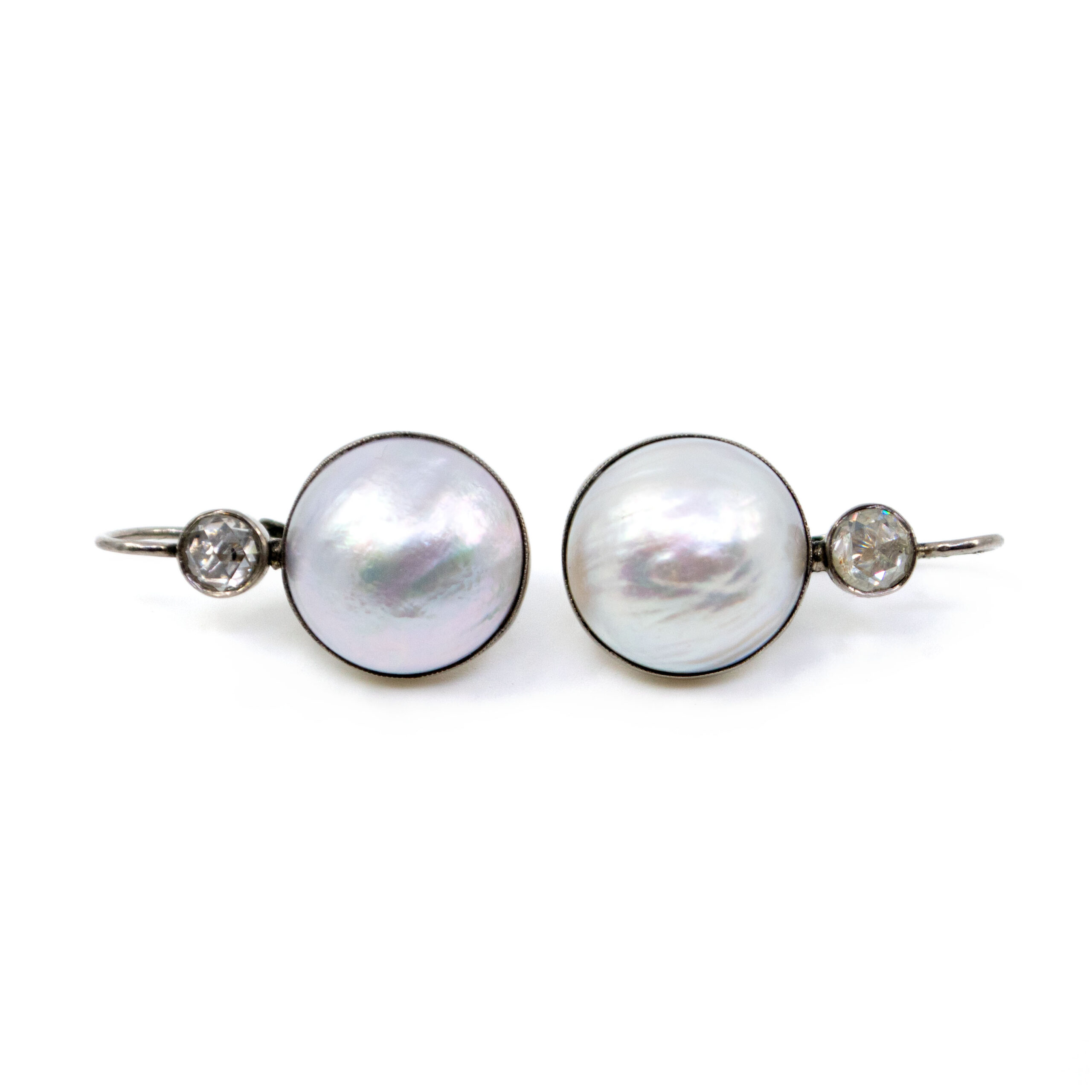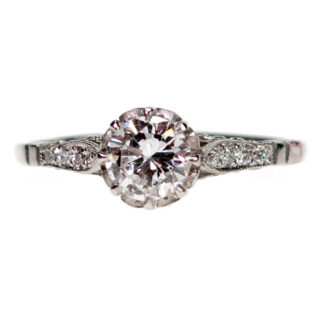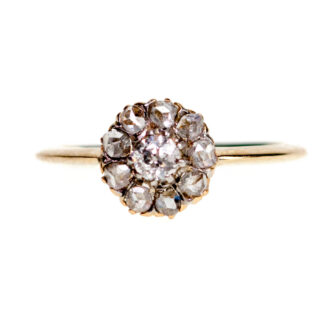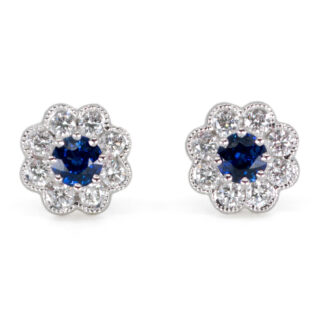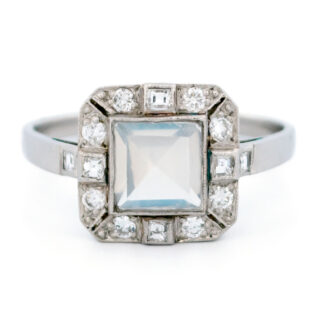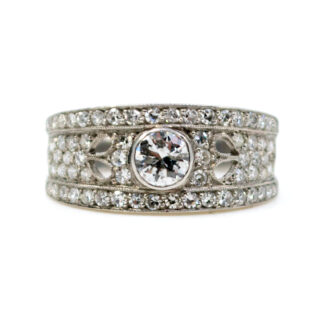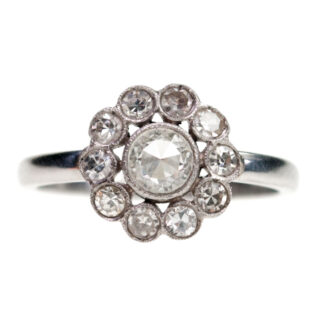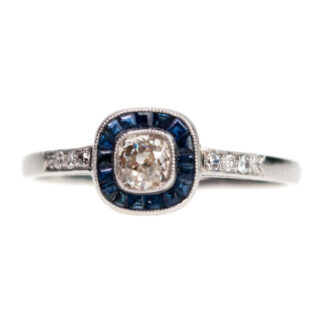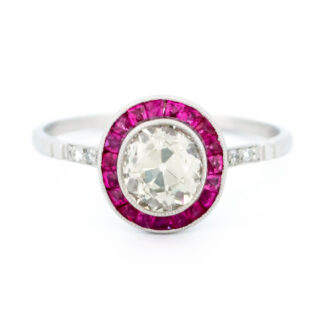These exquisite retro (1935-1950) earrings feature two 15mm round-shaped pearls as the centerpiece, adorned with approximately 0.60ct of rose-cut diamond accents. Crafted in 14k gold.
Details: 15mm Pearls, ±0.60ct Rose-cut diamond, 14k Earrings *.
Design Era: Retro (1935-1950).
Dimensions: H 2.7 x L 1.5 x W 1 cm.
Weight in grams: 9,00.
Condition: Very good condition – slightly used with small signs of wear.
Shipping and Pickup: This delicate piece ships from our store located in the center of Amsterdam, The Netherlands. We offer both registered shipping and local pickup at our store. In the case of local pickup, any applicable shipping costs will be refunded.
About Us: Add some sparkle to your style with Binenbaum.com. We offer a stunning selection of antique and vintage jewelry that you won’t find anywhere else. From timeless rings and dazzling necklaces to unique brooches, we have something for every taste and occasion. Visit our website today and treat yourself to a piece of history.
| Design Era | |
|---|---|
| Design & Historical Context | The jewelry industry was significantly impacted by the onset of World War II in the 1940s. Precious metals, particularly platinum, became scarce and in some cases were even banned from being sold. Palladium was used as a substitute for platinum in the war effort. In order to make the most of the limited supply of gold, a low karat gold alloy with a higher percentage of copper was used. This resulted in gold with a subtle, reddish hue, but through the use of different alloys, gold was able to appear in a range of colors within a single piece. Gold was also manipulated in various ways, such as being woven, braided, and coiled. Techniques like resilla, cannetille, and lacy filigree patterns reappeared in jewelry. Different textures were also used within a single design, with matte finishes being placed next to bright finishes to accentuate the design. Gold became the primary metal used in jewelry during the 1940s and 1950s. |
| Key Materials | |
| Materials & Craftsmanship | Pearl Pearls are small, round, and lustrous objects that are produced by certain types of mollusks, which are invertebrate animals that belong to the phylum Mollusca. Mollusks include a wide range of species, including oysters, clams, mussels, snails, and octopuses, among others. While all mollusks have the ability to produce pearls, only a few varieties are able to create gem-quality pearls that are suitable for use in jewelry. These include the oysters that produce akoya pearls, the freshwater mussels that produce freshwater pearls, and the South Sea and Tahitian pearls, which are produced by large saltwater oysters. Pearls are formed when an irritant, such as a grain of sand or a parasite, enters the mollusk and becomes trapped inside its shell. In response to the irritant, the mollusk secretes a substance called nacre, which coats the irritant and eventually forms a pearl. The quality of a pearl is determined by a number of factors, including its size, shape, color, and luster. High-quality pearls are prized for their beauty and are used in a variety of different types of jewelry, including necklaces, earrings, and bracelets. Rose-cut diamond The rose cut is a type of diamond cut that was popular in the 1500s and remained common during the Georgian and Victorian eras. It is characterized by a flat bottom with a dome-shaped crown that rises to a single apex, giving the diamond a shape that resembles a rose bud. Rose cut diamonds can have anywhere from 3 to 24 facets, which are small, flat surfaces that are cut into the diamond to create a specific shape and enhance its sparkle and brilliance. Unlike modern diamond cuts, such as the round brilliant or princess cut, the rose cut has a lower crown and a less brilliant appearance. It is a more primitive diamond cut that was used before the development of more advanced cutting techniques. However, it is still a popular choice for collectors of antique jewelry and for those who appreciate the timeless beauty of vintage cuts. Rose cut diamonds are typically less expensive than diamonds with more modern cuts because they require less labor and material to produce. They are often used as accent stones in jewelry designs or as the main gemstone in vintage-style pieces. Despite their lower price, rose cut diamonds can still be beautiful and valuable, and they are a popular choice for those who appreciate the unique charm and character of antique jewelry. 14k 14k gold is a popular choice for use in jewelry because it is durable, yet still relatively affordable compared to higher karat golds like 18k or 24k. It is made up of 58.5% pure gold and is mixed with other metals to make it harder and more durable. 14k gold is available in a range of colors, including yellow, white, and rose, and is commonly used in a variety of jewelry pieces such as rings, earrings, necklaces, and bracelets. One of the advantages of 14k gold is that it is more resistant to wear and tear than pure gold, which makes it suitable for everyday wear. However, it is still softer than other alloys such as stainless steel or platinum, so it may require more maintenance to keep it looking its best. Overall, 14k gold is a popular choice for those who want the look and feel of gold, but at a more affordable price point. |
| Dimensions | H 2.7 x L 1.5 x W 1 cm |
| Gender | |
| Weight (in grams) | 9,00 |
| Condition | Very good condition – slightly used with small signs of wear |
Enhance the Beauty of Your Jewelry with Proper Care
Wearing your jewelry is a special way to express yourself and add a touch of personal style to any look. However, to ensure your jewelry remains in pristine condition, there are a few simple steps you need to take to keep it looking its best.
General Care Instructions:
Remove jewelry when showering or bathing, especially when at the beach, in the sea or in chlorinated water.
Avoid wearing jewelry while doing physical work such as housekeeping, gardening or exercise.
Storing your jewelry in a dry and cool place will help protect it from moisture, dirt and dust.
Keeping it away from harsh chemicals such as bleach, ammonia and chlorine will help to avoid discoloration and damage.
Cleaning your jewelry regularly with a soft cloth will help to keep it looking shiny and new.
Avoid exposing your jewelry to extreme temperatures, such as leaving it in direct sunlight or near a heater, as this can cause damage.
Handle your jewelry carefully and avoid dropping it, as this can cause the stones to loosen or the metals to scratch.
Finally, if possible, have your jewelry professionally checked and serviced. This will ensure that any potential problems are spotted and fixed before they become worse.
By following these tips, you can enjoy your precious jewelry for many years to come.
Related products
-
Diamond Platinum Solitaire Ring 7010-1936
€ 5.695,00 VAT incl. (where applicable) -
Diamond 14k Cluster Ring 6898-1835
€ 1.395,00 VAT incl. (where applicable) -
Sapphire Diamond 18k Cluster Earrings 8204-0840
€ 1.495,00 VAT incl. (where applicable) -
Moonstone Diamond Platinum Square-Shape Ring 4489-4682
€ 2.995,00 VAT incl. (where applicable) -
Diamond Platinum Ring 5208-4734
€ 4.695,00 VAT incl. (where applicable) -
Diamond Platinum Cluster Ring 4985-4693
€ 2.695,00 VAT incl. (where applicable) -
Diamond Sapphire Platinum Target Ring 6988-0010
€ 2.295,00 VAT incl. (where applicable) -
Binenbaum Luxe Halo Ring 6966-1885
€ 5.295,00 VAT incl. (where applicable)
- Home
- Collection
- Fine Jewelry
- Silver Jewelry
- Silverware
- Boxes
- Candlesticks
- Salt and pepper shakers
- Miniatures
- Salt cellars
- Spoon Set
- Condiments
- Frames
- Napkin Ring
- Spoon
- Oddities
- Cups
- Vases
- Cutlery
- Serving Spoon And Cake Server
- Candlesticks
- Baskets
- Hanukkiah
- Spice Tower
- Yad
- Tea Set
- Sugar Castor
- Napkin Rings
- Wine Bottle Coaster
- Wine Stopper
- Tea Pot
- Jugs
- Rattles
- Hip Flask
- Miscellaneous
- Rings 💍
- About
- Contact



